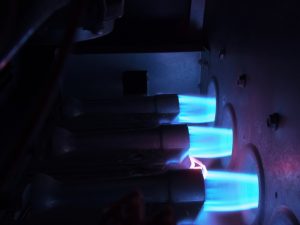 One of our main concerns as an HVAC contractor handling heating in Colorado Springs, CO is ensuring our customers have gas furnaces that run safely through the winter season. Although gas furnaces are built with safety as the top priority, malfunctions can still lead to potential carbon monoxide hazards in a home as well as combustion dangers.
One of our main concerns as an HVAC contractor handling heating in Colorado Springs, CO is ensuring our customers have gas furnaces that run safely through the winter season. Although gas furnaces are built with safety as the top priority, malfunctions can still lead to potential carbon monoxide hazards in a home as well as combustion dangers.
We want to help you better understand your gas furnace, and in this post we’ll look at the safety features built into it to help it run hazard-free during the season. The more you know about these features, the more you’ll know about when the furnace isn’t running safely. Please don’t try to troubleshoot any of these features yourself or open up the furnace cabinet to tinker with it. Instead, shut off the gas to the furnace and call our technicians. We offer 24-hour emergency service for situations like this.
The Limit Switch
The limit switch turns off the furnace in case the heat exchanger overheats. The heat exchanger is the part of the furnace that applies heat to the air moving through it and into the house, a metal container that holds the hot combustion gas. If the furnace isn’t properly moving air around the heat exchanger, it will stay too hot. The limit switch detects this and will shut the furnace off to avoid danger.
The Flame Sensor
When the thermostat makes a request to the furnace for heat, it starts a process that sends gas to the burners and then ignites the burners with an electronic igniter. If the burners don’t light, it creates a danger of unburned gas flooding the combustion chamber, which is a fire hazard and can allow natural gas into the house. To prevent this, a flame sensor detects whether the burners have ignited. If the sensor doesn’t detect flames, it turns off the gas valve to stop gas flow to the burners.
(If you have an older furnace that uses a pilot light to ignite the burners, a device called a thermocouple serves the same purpose as a flame sensor.)
The Flame Rollout Switch
“Flame rollout” is when flames from the burners escape the combustion chamber and move where they shouldn’t, which can potentially be outside the furnace. When the furnace is operating normally, the flames from the burners are drawn directly into the heat exchanger. If there isn’t enough suction from the heat exchanger, the flames will seek oxygen wherever they can locate it, and this causes dangerous flame rollout. The rollout switch will shut the furnace off. If this happens to your furnace, don’t try to turn it back on: call for a professional.
The Air Pressure Switch
The exhaust gas in the heat exchanger exits the exchanger, the furnace, and the house through a flue. A fan called the draft inducer is responsible for moving these toxic gases into the flue. The air pressure switch determines if the exhaust is moving in the right direction. A change in pressure can mean toxic gases flowing back into the furnace and possibly into the house, and the air pressure switch will shut off gas to the burners if this occur.
Robbins Heating & Air Conditioning serves Colorado Springs and the surrounding area. Call us as soon as you think you need repairs for your gas furnace.
